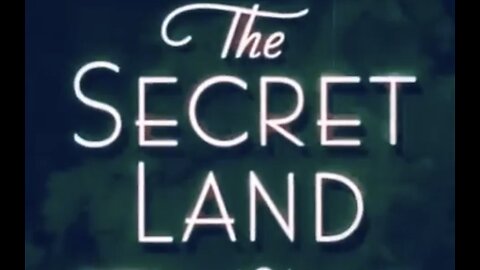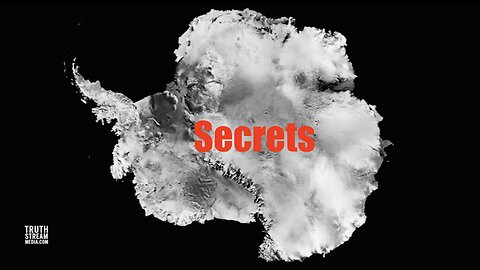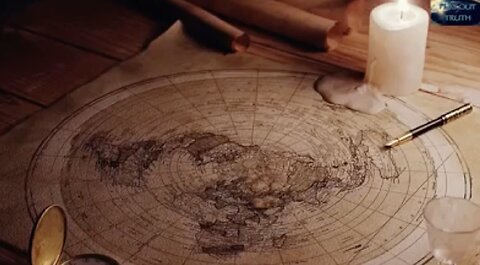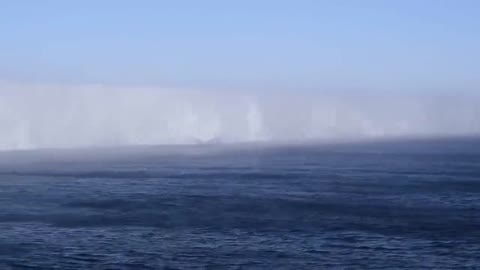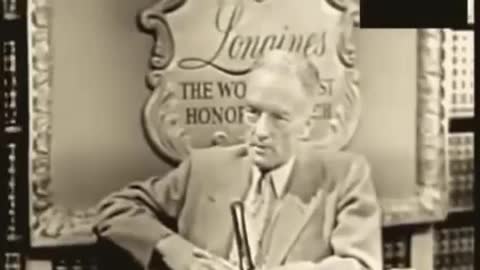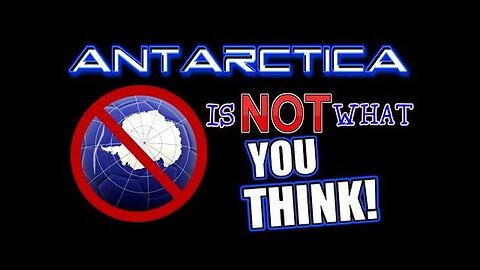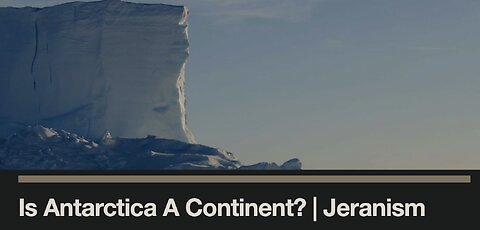
Antarctica
9 videos
Updated 4 months ago
There is one thing that all the nations of the earth agree on...you can't go there. Why?
-
-
The Secret Land (1948) | The Secret Land Operation Highjump U.s. Navy Antarctic Expedition
 Don't ObeyThe Secret Land is a 1948 American documentary about an American expedition code-named "Operation High Jump" to explore Antarctica. It won the Academy Award for Best Documentary Feature. The movie was filmed entirely by military cameramen. The expedition was under the overall command of Admiral Richard E. Byrd, no stranger to the Antarctic. This was a large undertaking involving 13 ships and over 4000 thousand men. The fleet departed from Norfolk, Virginia traveling through the Panama canal and then southward to their final destination. The trip through the ice pack was fraught with danger and forced the submarine that was part of the fleet to withdraw. The trip was a success meeting all of its scientific goals. The film is narrated by three Hollywood stars, all of whom served in the US Navy: Robert Taylor, Robert Montgomery and Van Heflin. In 1946, the U.S. Navy launches "Operation Highjump" to explore and map the Antarctic region and, in the process, test men, ships and equipment against the harsh climate. Chester W. Nimitz, Chief of Naval Operations, directs the expedition. Three groups make up the expedition: The central land-plane group, headed by Rear-Admiral Richard E. Byrd, will explore and map the interior from a base in Little America, while two other groups will explore and map the eastern and western coasts. The teams must finish their work before the end of the brief Antarctic summer. In addition to scientific equipment and other supplies, the ships carry sled dogs to provide land transportation. At the equator, men and dogs who have never crossed the equator are initiated in humorous King Neptune ceremonies. When strong storms hit the ships in the southern hemisphere, many sailors are injured and several seaplanes are lost. The rough seas prevent the central group from landing at Scott Island, but despite this setback, the men onboard celebrate Christmas with a traditional dinner and gifts. The central group now depends on an icebreaker to cut a path through the ice pack in the Ross Sea to the Bay of Whales and the base at Little America on the Ross Ice Shelf. Meanwhile, the western group has reached Peter Island. From there, seaplanes scout the coast, where they find explorer Robert Scott's former camp. The progress of the central group is hampered by ice, and the submarine accompanying the ships is caught between two ice flows. The icebreaker returns to free the submarine, which is sent home. While the western group waits for the icebreaker's return, they observe and capture for further study penguins, seals and other Antarctic wildlife. When the central group reaches Little America, the explorers unload their equipment and, making use of the twenty-four-hour summer daylight, quickly build a tent city and airstrips. Admiral Byrd flies in on the first airplane, which lands perfectly, but the remaining planes must take off at night in order to beat an approaching storm. After the blizzard clears, ice is cleaned off the planes, and a man crawls down a shaft to an earlier base buried under the snow. The cold, dry air of Antarctica has perfectly preserved the supplies that were left behind. While mapping expeditions fly over the land, divers test cold-water survival suits in the frigid ocean. On flights from their base in the Bellany Islands, the eastern group spots Mt. Aramis, the only active volcano near the South pole, and near the Shakleton Ice Shelf, the explorers discover 500 miles of snowless land heated by warm water lakes, which they name Bunger's Oasis. The short summer is ending, and the fleet near Little America is becoming frozen in the ice. After the fleet is freed by an icebreaker, it departs, leaving behind Byrd and some volunteers to continue explorations by air. During the eastern group's mapping of the Phantom Coast, mountains made of coal are discovered. A crew is lost during one flight, and after a search of two weeks, the survivors are found. Three men die in the crash and one, badly burned, loses his legs to frostbite. The icebreaker returns to pick up Byrd and his men, and the successful expedition returns home, having learned much about this largely unknown territory. This film is part of the Periscope Film LLC archive, one of the largest historic military, transportation, and aviation stock footage collections in the USA. Entirely film backed, this material is available for licensing in 24p HD, 2k and 4k.3.57K views
Don't ObeyThe Secret Land is a 1948 American documentary about an American expedition code-named "Operation High Jump" to explore Antarctica. It won the Academy Award for Best Documentary Feature. The movie was filmed entirely by military cameramen. The expedition was under the overall command of Admiral Richard E. Byrd, no stranger to the Antarctic. This was a large undertaking involving 13 ships and over 4000 thousand men. The fleet departed from Norfolk, Virginia traveling through the Panama canal and then southward to their final destination. The trip through the ice pack was fraught with danger and forced the submarine that was part of the fleet to withdraw. The trip was a success meeting all of its scientific goals. The film is narrated by three Hollywood stars, all of whom served in the US Navy: Robert Taylor, Robert Montgomery and Van Heflin. In 1946, the U.S. Navy launches "Operation Highjump" to explore and map the Antarctic region and, in the process, test men, ships and equipment against the harsh climate. Chester W. Nimitz, Chief of Naval Operations, directs the expedition. Three groups make up the expedition: The central land-plane group, headed by Rear-Admiral Richard E. Byrd, will explore and map the interior from a base in Little America, while two other groups will explore and map the eastern and western coasts. The teams must finish their work before the end of the brief Antarctic summer. In addition to scientific equipment and other supplies, the ships carry sled dogs to provide land transportation. At the equator, men and dogs who have never crossed the equator are initiated in humorous King Neptune ceremonies. When strong storms hit the ships in the southern hemisphere, many sailors are injured and several seaplanes are lost. The rough seas prevent the central group from landing at Scott Island, but despite this setback, the men onboard celebrate Christmas with a traditional dinner and gifts. The central group now depends on an icebreaker to cut a path through the ice pack in the Ross Sea to the Bay of Whales and the base at Little America on the Ross Ice Shelf. Meanwhile, the western group has reached Peter Island. From there, seaplanes scout the coast, where they find explorer Robert Scott's former camp. The progress of the central group is hampered by ice, and the submarine accompanying the ships is caught between two ice flows. The icebreaker returns to free the submarine, which is sent home. While the western group waits for the icebreaker's return, they observe and capture for further study penguins, seals and other Antarctic wildlife. When the central group reaches Little America, the explorers unload their equipment and, making use of the twenty-four-hour summer daylight, quickly build a tent city and airstrips. Admiral Byrd flies in on the first airplane, which lands perfectly, but the remaining planes must take off at night in order to beat an approaching storm. After the blizzard clears, ice is cleaned off the planes, and a man crawls down a shaft to an earlier base buried under the snow. The cold, dry air of Antarctica has perfectly preserved the supplies that were left behind. While mapping expeditions fly over the land, divers test cold-water survival suits in the frigid ocean. On flights from their base in the Bellany Islands, the eastern group spots Mt. Aramis, the only active volcano near the South pole, and near the Shakleton Ice Shelf, the explorers discover 500 miles of snowless land heated by warm water lakes, which they name Bunger's Oasis. The short summer is ending, and the fleet near Little America is becoming frozen in the ice. After the fleet is freed by an icebreaker, it departs, leaving behind Byrd and some volunteers to continue explorations by air. During the eastern group's mapping of the Phantom Coast, mountains made of coal are discovered. A crew is lost during one flight, and after a search of two weeks, the survivors are found. Three men die in the crash and one, badly burned, loses his legs to frostbite. The icebreaker returns to pick up Byrd and his men, and the successful expedition returns home, having learned much about this largely unknown territory. This film is part of the Periscope Film LLC archive, one of the largest historic military, transportation, and aviation stock footage collections in the USA. Entirely film backed, this material is available for licensing in 24p HD, 2k and 4k.3.57K views -
The Real Secrets Hidden in Antarctica... Revealed (2017)
 Don't ObeyA wealth of mystery lies hidden within the 6 million cubic miles of ice that dominate the surface of Antarctica. It's a continent shrouded in speculation, misinformation and wartime intrigue. The fascinating documentary titled "The Real Secrets Hidden in Antarctica...Revealed" sets out to expose the juiciest of these potential cover-ups. The film outlines the suspicious history of the continent, geographical inconsistencies, and unexplained anomalies discovered through satellite imagery. The evidence seems to suggest that the region was more tropical at one time, and could hold meaningful clues as to our ancient existence on this planet. The filmmakers defend this assertion by illustrating the discovery of man-made artifacts by early explorers, areas where vegetation is thought to have once thrived, and large quantities of exotic life buried miles underneath the frozen surface. Much of the film's narrative revolves around the formidable presence of international military forces on the continent, including those of the United States, Britain, Russia, and even the Nazis during World War II. History shows us that the continent is of tremendous strategic value to military interests. Rumors persist that secret bunkers may have existed there in years past, and that they might have even sheltered Hitler in the aftermath of the war. The film contends that beneath the innocuous guise of weather and penguin research, the United States might have taken advantage of the continent's vast uranium resources by constructing obscured nuclear testing and missile sites. More mysteries lie ahead as the film details additional top secret efforts that are thought to have occurred in Antarctica, including the study and manipulation of weather patterns, the storage of mass amounts of food, and the construction of elaborate underground tunnel and transport systems. The film will certainly appeal to conspiracy theory enthusiasts, but it is executed with great journalistic authority. It's a comprehensive portrait of the continent's rich environmental character, its many decades of geo-political importance, and the enigmatic qualities that attract both legitimate and nefarious entities. "The Real Secrets Hidden in Antarctica...Revealed" is impressively adorned with many credible news clippings, stock clips and archived interviews which support its conspiratorial claims.2.43K views 1 comment
Don't ObeyA wealth of mystery lies hidden within the 6 million cubic miles of ice that dominate the surface of Antarctica. It's a continent shrouded in speculation, misinformation and wartime intrigue. The fascinating documentary titled "The Real Secrets Hidden in Antarctica...Revealed" sets out to expose the juiciest of these potential cover-ups. The film outlines the suspicious history of the continent, geographical inconsistencies, and unexplained anomalies discovered through satellite imagery. The evidence seems to suggest that the region was more tropical at one time, and could hold meaningful clues as to our ancient existence on this planet. The filmmakers defend this assertion by illustrating the discovery of man-made artifacts by early explorers, areas where vegetation is thought to have once thrived, and large quantities of exotic life buried miles underneath the frozen surface. Much of the film's narrative revolves around the formidable presence of international military forces on the continent, including those of the United States, Britain, Russia, and even the Nazis during World War II. History shows us that the continent is of tremendous strategic value to military interests. Rumors persist that secret bunkers may have existed there in years past, and that they might have even sheltered Hitler in the aftermath of the war. The film contends that beneath the innocuous guise of weather and penguin research, the United States might have taken advantage of the continent's vast uranium resources by constructing obscured nuclear testing and missile sites. More mysteries lie ahead as the film details additional top secret efforts that are thought to have occurred in Antarctica, including the study and manipulation of weather patterns, the storage of mass amounts of food, and the construction of elaborate underground tunnel and transport systems. The film will certainly appeal to conspiracy theory enthusiasts, but it is executed with great journalistic authority. It's a comprehensive portrait of the continent's rich environmental character, its many decades of geo-political importance, and the enigmatic qualities that attract both legitimate and nefarious entities. "The Real Secrets Hidden in Antarctica...Revealed" is impressively adorned with many credible news clippings, stock clips and archived interviews which support its conspiratorial claims.2.43K views 1 comment -
-
Admiral Byrd - Longines Chronoscope Interview (1954) - Talking about Antarctica Secrets
 Don't ObeyThis is the full, uncut Admiral Byrd interview that aired on the Longines television program on December 8, 1954 with improved video and audio. Flat Earth revealed? In this interview, Admiral Byrd has many secrets to tell about Antartica that could be used to support the Flat Earth, the Hollow Earth or the standard spinning ball earth ideas. One very interesting statement that Byrd makes is: "We’ve found enough coal, within a 180 miles of the South Pole, enough to supply the whole world for quite awhile. There’s evidence of many other minerals, we’re pretty sure there’s oil…there’s evidence of probably uranium there. It’s the most peaceful place in the world, but I don’t think it will be for long." From the National Archives. DECEMBER 8, 1954 Participants: Rear Adm. Richard E. Byrd, Antarctic explorer, interviewed by Kenneth Crawford and Larry Lesueur. Topic: Exploration in the Arctic and Antarctic regions. (200LW361)2.71K views 4 comments
Don't ObeyThis is the full, uncut Admiral Byrd interview that aired on the Longines television program on December 8, 1954 with improved video and audio. Flat Earth revealed? In this interview, Admiral Byrd has many secrets to tell about Antartica that could be used to support the Flat Earth, the Hollow Earth or the standard spinning ball earth ideas. One very interesting statement that Byrd makes is: "We’ve found enough coal, within a 180 miles of the South Pole, enough to supply the whole world for quite awhile. There’s evidence of many other minerals, we’re pretty sure there’s oil…there’s evidence of probably uranium there. It’s the most peaceful place in the world, but I don’t think it will be for long." From the National Archives. DECEMBER 8, 1954 Participants: Rear Adm. Richard E. Byrd, Antarctic explorer, interviewed by Kenneth Crawford and Larry Lesueur. Topic: Exploration in the Arctic and Antarctic regions. (200LW361)2.71K views 4 comments -
-
-
